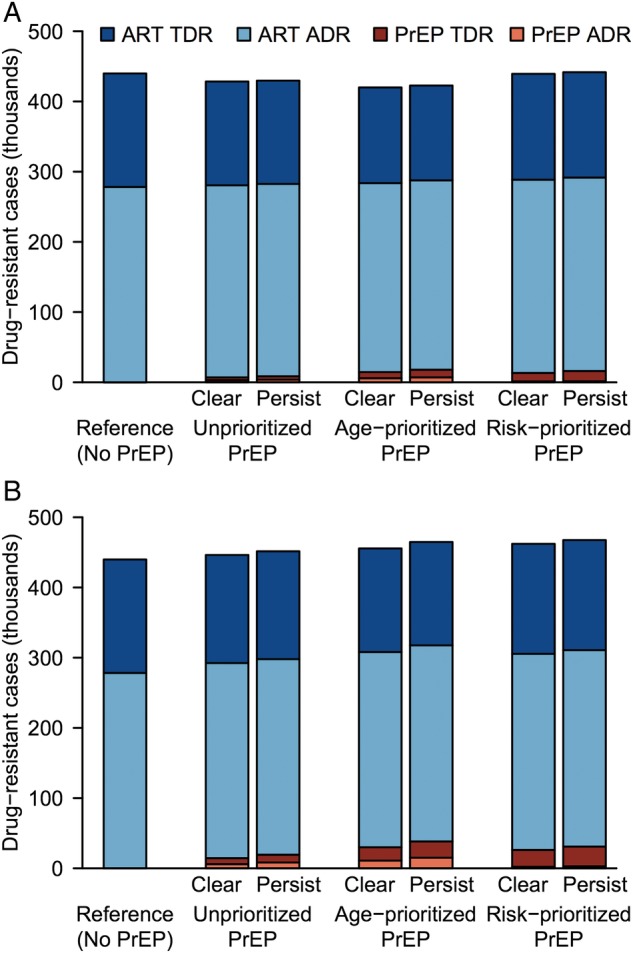Figure 4.

Prevalent drug-resistant cases after 10 years of pre-exposure prophylaxis (PrEP) scale-up. Panels show results of (A) optimistic and (B) conservative base-case scenarios. Optimistic (conservative) scenario assumptions were as follows: 90% (70%) PrEP efficacy, 80% (70%) PrEP reliability vs wild-type human immunodeficiency virus (HIV), 0%–50% relative efficacy vs rilpivirine-resistant HIV, 40% (70%) cross-resistance between antiretroviral treatment (ART) and PrEP, and successful (all) PrEP injections select drug-resistant HIV after breakthrough infection. In primary analysis, PrEP drug levels cleared when PrEP efficacy disappeared after 2 months (“Clear”); in secondary analysis, drug levels persisted for 3 (optimistic) or 6 (conservative) months, whereas efficacy disappeared after 2 months (“Persist”). Data are shown for 15% unprioritized and age-prioritized PrEP coverage. Abbreviations: ADR, acquired drug resistance; TDR, transmitted drug resistance.
